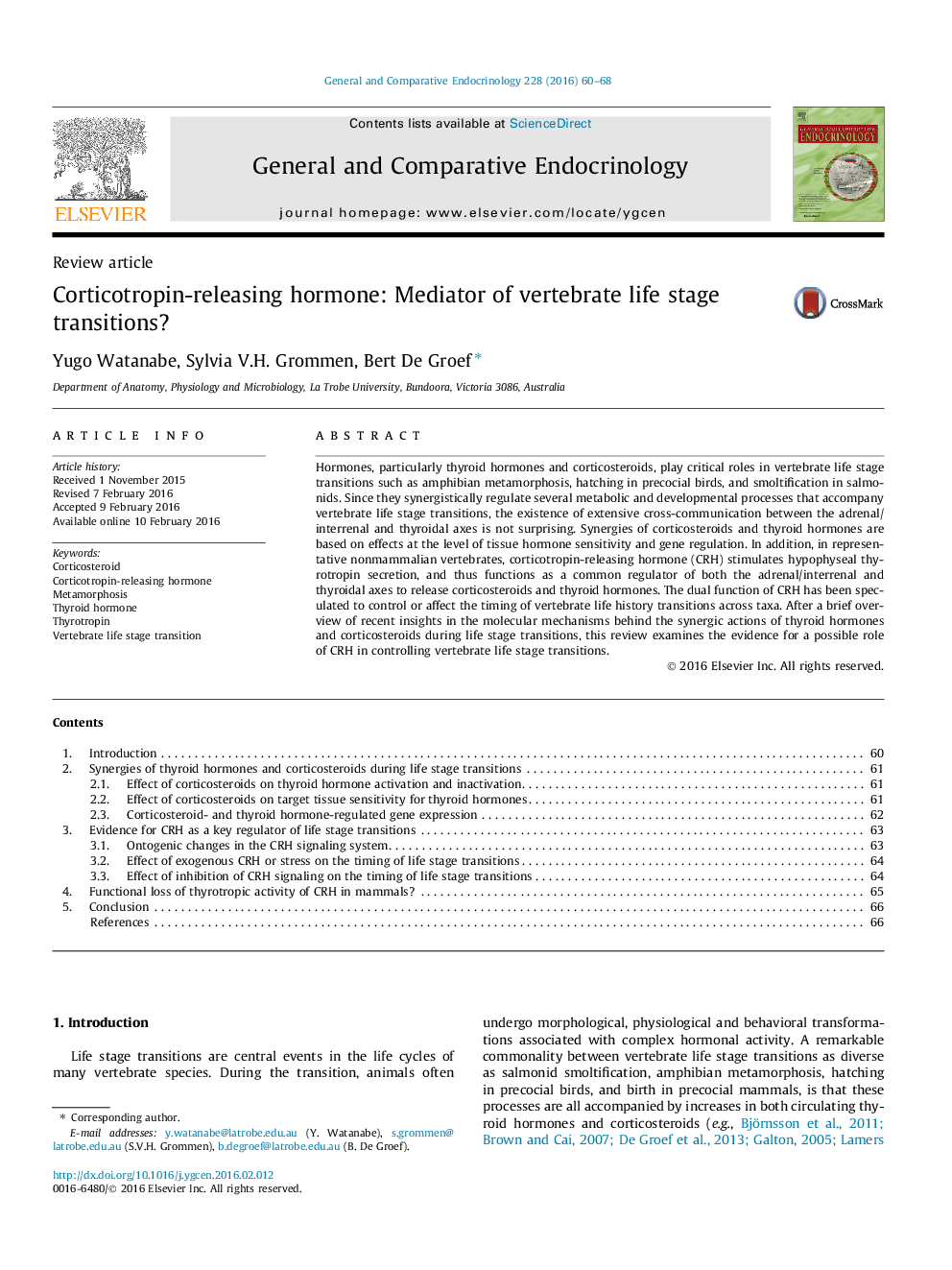| Article ID | Journal | Published Year | Pages | File Type |
|---|---|---|---|---|
| 2799803 | General and Comparative Endocrinology | 2016 | 9 Pages |
•Thyroid hormones and corticoid synergies are critical in many vertebrate life stage transitions.•Corticoids affect the expression of deiodinases and thyroid hormone receptors.•CRH has corticotropic and thyrotropic actions in nonmammalian vertebrates.•CRH may regulate transitions, but only amphibian metamorphosis has been studied in detail.•The available evidence suggests that CRH has lost its thyrotropic activity in mammals.
Hormones, particularly thyroid hormones and corticosteroids, play critical roles in vertebrate life stage transitions such as amphibian metamorphosis, hatching in precocial birds, and smoltification in salmonids. Since they synergistically regulate several metabolic and developmental processes that accompany vertebrate life stage transitions, the existence of extensive cross-communication between the adrenal/interrenal and thyroidal axes is not surprising. Synergies of corticosteroids and thyroid hormones are based on effects at the level of tissue hormone sensitivity and gene regulation. In addition, in representative nonmammalian vertebrates, corticotropin-releasing hormone (CRH) stimulates hypophyseal thyrotropin secretion, and thus functions as a common regulator of both the adrenal/interrenal and thyroidal axes to release corticosteroids and thyroid hormones. The dual function of CRH has been speculated to control or affect the timing of vertebrate life history transitions across taxa. After a brief overview of recent insights in the molecular mechanisms behind the synergic actions of thyroid hormones and corticosteroids during life stage transitions, this review examines the evidence for a possible role of CRH in controlling vertebrate life stage transitions.
